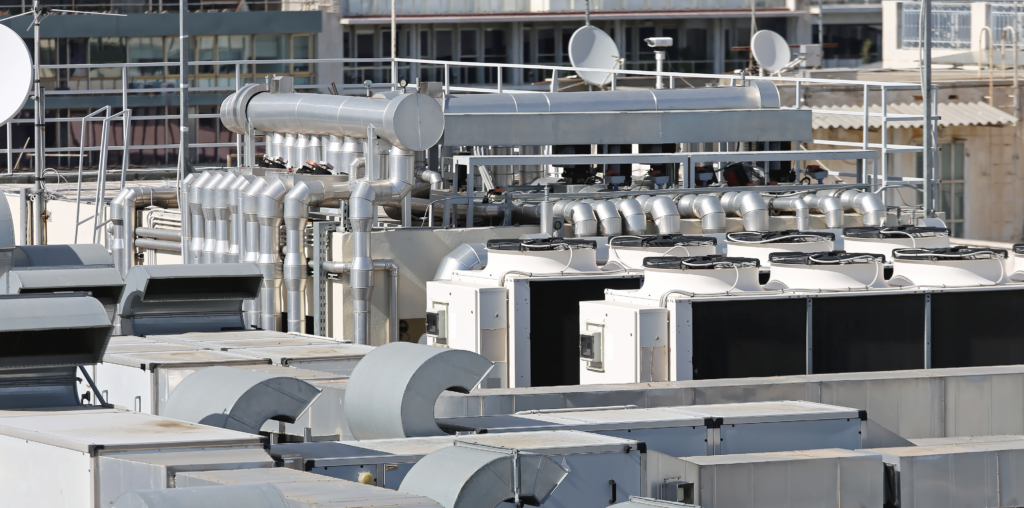Insights • April 21, 2025
How Can MEP Engineering Design Help Airports Reduce Operational Costs?
Airline travel remains one of the most popular and efficient modes of transportation worldwide. Each day, over 2 million people board flights across the United States, and, in response to this growing demand, airports are investing in new facilities to accommodate increasing numbers of travelers. But, constructing and maintaining airports is costly, especially regarding operational expenses. Since airports operate 24 hours a day, 365 days a year, the systems that keep the facilities running, like heating, cooling, lighting, and plumbing, are always in use. To offset potential financial challenges, airports can reduce costs by upgrading their facility systems through Mechanical, Electrical, and Plumbing (MEP) engineering designs. With improved MEP systems, airports can achieve greater energy efficiency while reducing their operational costs.
Airports can reduce operational costs by upgrading their heating, ventilation, and air conditioning (HVAC) systems, which account for around 50% of an airport’s energy consumption. Modern HVAC systems can incorporate Internet of Things (IoT) technology, which uses sensors and meters to continuously monitor environmental conditions in real time. By collecting and analyzing this data, these systems can automatically predict maintenance needs and optimize performance. This capability is valuable for addressing the challenges of climate control in airport terminals, where occupancy levels fluctuate throughout the day. IoT-enabled HVAC infrastructure gives airport management more control over facility systems, allowing temperature adjustments based on actual conditions rather than fixed schedules. For example, the system can automatically decrease cooling output on days with lower passenger traffic, resulting in energy savings and lower operational costs.

Girish Narayan, an associate mechanical engineer at Milhouse, has gained on-site experience working on various airport facility projects. He believes that implementing advanced technologies can lead to significant cost savings for these airports over time, saying, “Energy Recovery Ventilators (ERV), which are used to recover energy from the exhaust air stream, reduce the cooling & heating loads of the Air Handling Unit (AHU), and thus lowers the energy required. Using Variable Frequency Drive (VFD) in pumps and fans controls the motor speed and reduces the power consumption. An array of similar cost-saving solutions is available and can be implemented.” To help use HVAC systems more efficiently, operations managers can also use advanced logic controls for peak load management, automate chiller operation sequences, and conduct regular performance evaluations to identify optimization opportunities.

Industry reports show that these technologies reduce energy waste, optimize system performance, and enhance airflow, and to successfully incorporate these systems, airports can engage in holistic MEP design planning with energy efficiency as the primary focus. “In my experience working on major airport projects in Chicago and Philadelphia, using energy-efficient equipment is non-negotiable,” Girish says. “Lower operational costs start with high-efficiency systems – smart HVAC and building automation controls, and proactive maintenance keeps airports running lean and green. A well-engineered HVAC system doesn’t just control temperature, it also controls costs by enhancing energy efficiency and ensures long-term savings in airport operations.”
Upgrading lighting systems from traditional bulbs to Light Emitting Diodes (LEDs) can also reduce operational costs. LED lighting consumes up to 75% less energy than traditional systems and has a lifespan of up to 50,000 hours or more. They also provide better brightness and visibility in poor weather conditions like fog and rain, which improves safety for pilots, ground crews, and passengers. The adaptability of LED lighting allows it to be utilized in various applications, like illuminating interior terminals, lighting runways, guiding aircrafts on taxiways, enhancing visibility on the apron, lighting exterior pathways, and supporting wayfinding signage. Many LED systems also feature centralized remote control or IoT capabilities, allowing operations teams to adjust lighting configurations in real-time, ensuring that lighting is provided only when and where it is needed.

Renay Harris, electrical engineering I at Milhouse, has worked on various MEP and facilities projects focused on replacing traditional bulbs with LED lighting. “In spaces like airports, where many people pass through daily, I believe LED fixtures offer the best efficiency,” she said. “LED light fixtures have a high luminous efficacy, which means they don’t need to be replaced as frequently. This contributes to a longer lifespan compared to traditional fixtures, which is crucial for reducing operational costs.”
Major international airports have demonstrated the benefits of transitioning to LED technology. Los Angeles International Airport successfully switched to LED lighting throughout its terminals, parking structures, and airfields, resulting in a 75% decrease in energy consumption, and Manchester Airport in the United Kingdom reported a 60% reduction in energy usage and a 50% decrease in carbon emissions after converting to LED systems. Milhouse assisted O’Hare International Airport with electrical engineering design and cost estimation while constructing a new Rotunda building’s back of house spaces and mechanical rooms. Our engineers developed a reflective ceiling and an LED lighting design plan, which helped O’Hare implement an LED system that lowered energy consumption, reduced maintenance costs, and decreased overall expenses.

Plumbing systems at airports also present new opportunities for cost-saving measures. Reliable water systems are needed for supporting high-traffic areas like passenger restrooms, restaurant kitchens, drinking fountains, and facilities for aircraft de-icing and washing. With thousands of daily passengers, the resulting high-water demand leads to higher utility costs for airport operators. In response, airport management teams are exploring innovative strategies for water conservation.
One approach is the installation of water-saving fixtures, like low-flow faucets, toilets, and urinals. In high-traffic restroom areas, incorporating waterless urinals and sensor-activated faucets ensures that water is used only when necessary, thereby reducing water consumption, lowering utility bills, and decreasing maintenance expenses. Rainwater collection systems can also be beneficial, allowing for the reuse of rainwater for irrigation, cooling towers, and non-potable applications such as toilet flushing. This practice decreases reliance on external water sources and contributes to overall savings in water-related costs. In addition to these fixtures, tankless water heaters and solar water heating systems can further optimize energy consumption associated with water heating. These systems provide hot water on demand, enhancing energy efficiency and reducing heating costs.
The successful implementation of these upgrades requires collaboration between MEP engineers and airport operations personnel. This teamwork ensures that water conservation measures are integrated with existing systems while fulfilling operational requirements, and by adopting a holistic approach to water management, airports can significantly reduce their operational costs.

At Milhouse, we aim to deliver top-quality MEP design systems that enhance operational efficiency and lower costs for our clients. Our MEP engineering team prioritizes designing HVAC, lighting, and plumbing systems that lower energy consumption and reduce operational costs. Milhouse is dedicated to pioneering the future of aviation facility infrastructure through MEP design that boosts performance and generates cost reductions for our clients.
“Airports are the gateways to the world. So, let’s ensure their efficient MEP systems showcase our commitment towards a sustainable future!”
– Girish Narayan, Associate Mechanical Engineer
